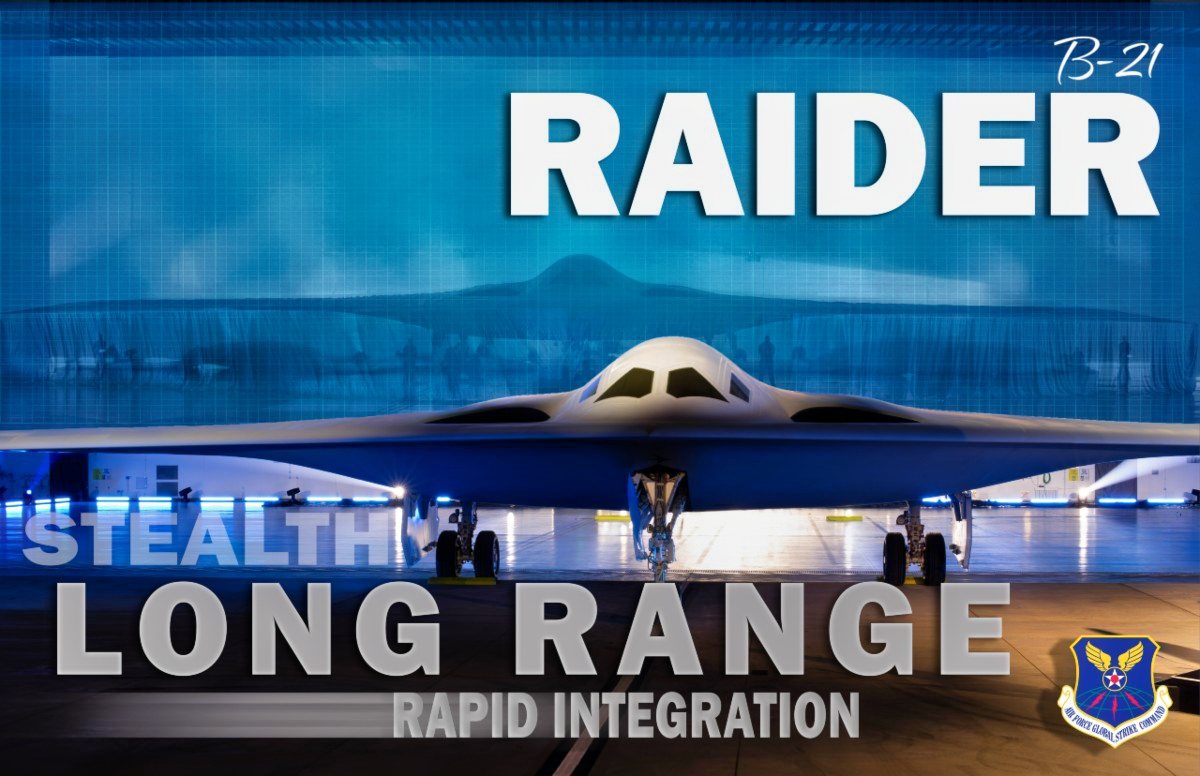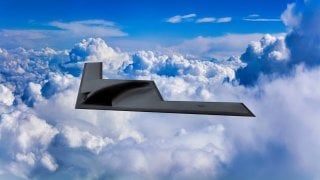The Air Force's B-21 Raider Nightmare
The history of reduced procurements, such as the B-2 and F-22 programs, prompts concerns about the future of the B-21 Raider amidst evolving military needs and fiscal constraints.
Summary: The B-21 Raider, developed by Northrop Grumman for the U.S. Air Force, is a sixth-generation bomber designed for multiple roles including battle management and intelligence collection.
-Smaller than the B-2 Spirit, its reduced wingspan enhances stealth capabilities. The aircraft features modular systems for easy upgrades, similar to the F-35's architecture. The Air Force plans to acquire at least 100 units by the decade's end, with costs per unit recently negotiated down from initial estimates.
However, the history of reduced procurements, such as the B-2 and F-22 programs, prompts concerns about the future of the B-21 Raider amidst evolving military needs and fiscal constraints.
B-21 Raider: U.S. Air Force's Future Stealth Bomber Explained
The B-21 Raider is being developed by Northrop Grumman to serve the U.S. Air Force as a battle manager, intelligence-collection platform, and intercept aircraft. Initially debuted in late 2022, the sixth-generation bomber is expected to sport a range of enhancements over its predecessors.
The service released images of the upcoming airframe in 2023, showing a bomber much smaller than the B-2 Spirit. Sandboxx News suggests that the B-21’s wingspan could be roughly 15% shorter than previous bombers, a significant advantage that will make the new aircraft harder for enemy radar to detect. The Raider will incorporate modular systems that will enable seamless upgrades as future technologies become available, imitating the F-35 Lightning II’s open-system architecture.
Considering the Raider’s capabilities, it is only logical that the platform comes with a hefty price tag. The Air Force hopes to introduce at least 100 of these bombers by the end of the decade. Some analysts want the service to acquire far more Raiders than that, believing the aircraft is crucial to maintaining operational readiness for potential conflicts with China, Russia, or other adversaries.
Earlier this year, Northrop Grumman reported a $1.6 billion pre-tax charge on the Raider program. More recently, though, the Air Force said it is seeing a drop in the per-unit cost of the B-21 following negotiations with the manufacturer. In 2022, the Air Force said it would remain under the average procurement cost of $692 million per unit.
Air Force Secretary Frank Kendall noted that the service is planning for other aspects of the Raider program, not just constructing the bomber. From building the facilities needed to operate and maintain the B-21, to training pilots and the crew members who will work on it, many more details need to be finalized and funded.
“I’ve seen programs get into trouble because there was too much focus on the platform and not enough on all the things that are necessary to support it,” Kendall said. “Hopefully, we will have avoided that in the case of the B-21.”
The B-21 Nightmare: Ending Up Getting Cut Like the B-2 and F-22
While B-21 Raider procurement plans appear promising, the Air Force has a history of cutting new platforms.
In the 1990s, the U.S. halted the B-2 bomber program at just 20 planes. The Air Force originally wanted to build 75 of these airframes, but budgetary constraints and other priorities limited the output, and the B-2 program didn’t live up to its potential. A similar story played out with the F-22 Raptor, the world’s first fifth-generation jet. The Air Force initially wanted to procure 750 Raptors, but the total was cut in 2009 to 187 due to high costs, the arrival of the newer F-35, and the country’s shift to the War on Terror.

The Air Force and U.S. lawmakers should be wary of similarly cutting the Raider program. While drones and other systems associated with future wars cannot be ignored, America must also prepare for the current threat climate. Maintaining a superior stealth bomber fleet will be critical if a war with China erupts over the next decade.
About the Author: Maya Carlin
Maya Carlin, National Security Writer with The National Interest, is an analyst with the Center for Security Policy and a former Anna Sobol Levy Fellow at IDC Herzliya in Israel. She has by-lines in many publications, including The National Interest, Jerusalem Post, and Times of Israel. You can follow her on Twitter: @MayaCarlin.


